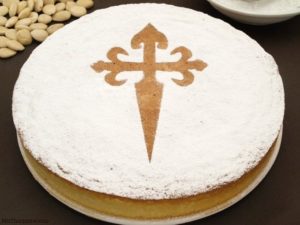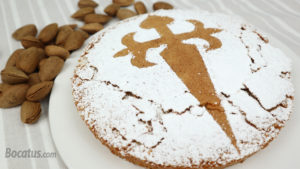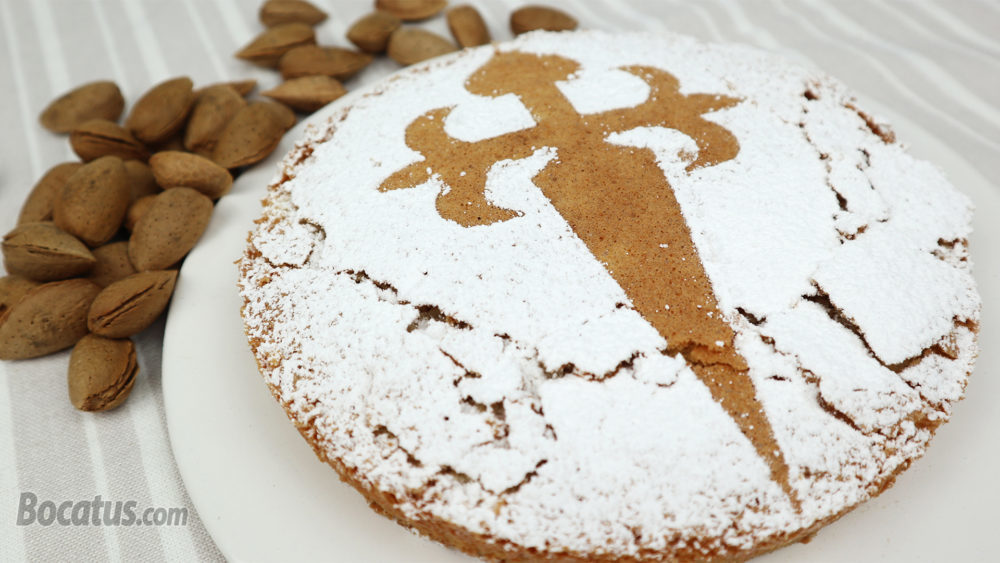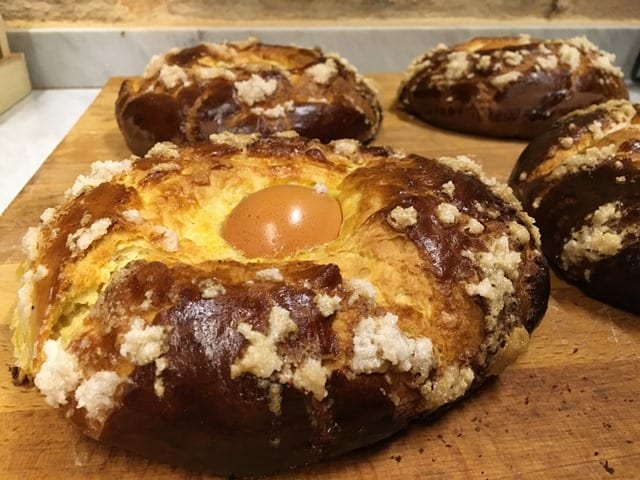You've been in Galicia and you haven't eaten Santiago's cake? If the answer is affirmative, it is that you have not been to Galicia. There is no dessert as Galician as this one. Popularized through millions of pilgrims that they take to their lands, their popularity has not stopped growing. Next you will discover its curious origins. How it went from being a luxury delicacy to a tourist attraction. What does a inquisitor general with this story? Let's dive into the exciting world of Galician pastry.
How is it?
Think of a Galician dessert. Surely you have come up with the one that is probably the most iconic. The Santiag cakeor is tasted year by countless pilgrims. Those who walk the path that bears the same name as the cake do not forget it. That is why they decide to take it home and today we find it in pastry shops throughout Spain. Such is its prestige that you can find it in the State official newsletter. It was back in 2006 when the authorities granted him the Protected Geographical Indication.
Its scope of production is Galicia whole, according to the same BOE. However, to obtain a cake with PGI it must be made in a Galician bakery. in a traditional way. Its shape is round and covered in icing sugar. It is essential that you wear the Cross of the Order of Santiago as a sign of identity. This may sound like the outfit of Velázquez when he portrayed the meninas. Its aroma consists of bud y almond. This is the one that gives it its characteristic flavor.
On the other hand, the texture is fluffy and grainy. We can also refer to the way of presenting the Santiago cake. We can do it by lining it (with base) or without lining. Within these two varieties there will be more depending on the size of the cake that we want to make. It is made from yolk, ground almonds, sugar, eggs y lemon zest. Formerly flour was used although this ingredient has already fallen into disuse.

Origin and history of the Santiago cake
The autonomous community of Galicia included it in its 1996 traditional product inventory. Its cataloging was "typically Galician product". To get to this point, a process had to take place. The path of the Santiago cake to become a legend began in the Middle Ages. At that time almonds were not cultivated in Galicia because there are no almond trees there. It was imported from the Levant and was considered a delicacy of the nobility.
Its purposes were therapeutic, as well as gastronomic. The first reference to the cake dates from 1557. At that time a man named Pedro de Porto Carrero began to prepare it. At that time it was known as Royal Cake And it was served fragmented into two individual servings. With its current name we find it in the 1838 confectionery notebook de Luis Bartolome de Leybar. From that moment on, it began to spread through all Galician books on pastry.
Its precise origin is not entirely clear. What is known is the story about why the cross of Santiago is applied on it. We go back to 1924. In that year Jose Mora Soto, Founder of Mora house in Santiago de Compostela, he wanted to give the cake a distinctive touch. The rest of Compostela followed him and the custom remains to this day. All the cakes of Santiago carry the cross today.
Recommendations
En informationgastronomica.com We encourage you to walk the Camino de Santiago. Once you do, you can try it in different places. For many the best is that of the Casa Mora itself (nowadays it is called Mercedes mora). Nor can we forget the convents and their prestige pastry chef. The one of San Paio de Antaltares It is located in the Plaza de Quintana de Vivos in Santiago. Their nuns also specialize in tea pastries.

Colon house It is another Compostela establishment known for its cakes. It also specializes in caprices from Santiago and pearls from Compostela, among other products. Take advantage and do not limit yourself only to the cake. Galicia is a land full of authentic culinary treasures for all palates.







